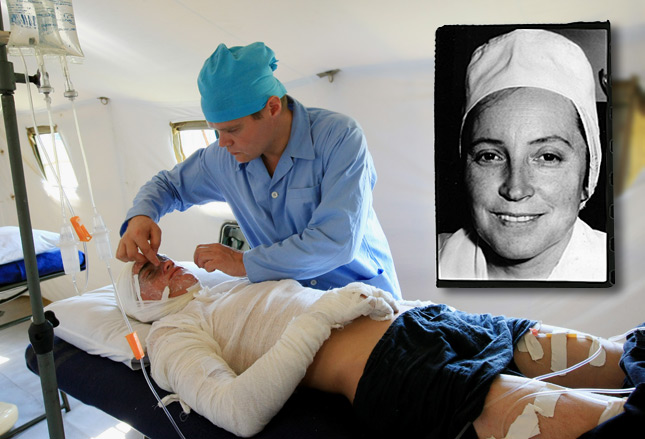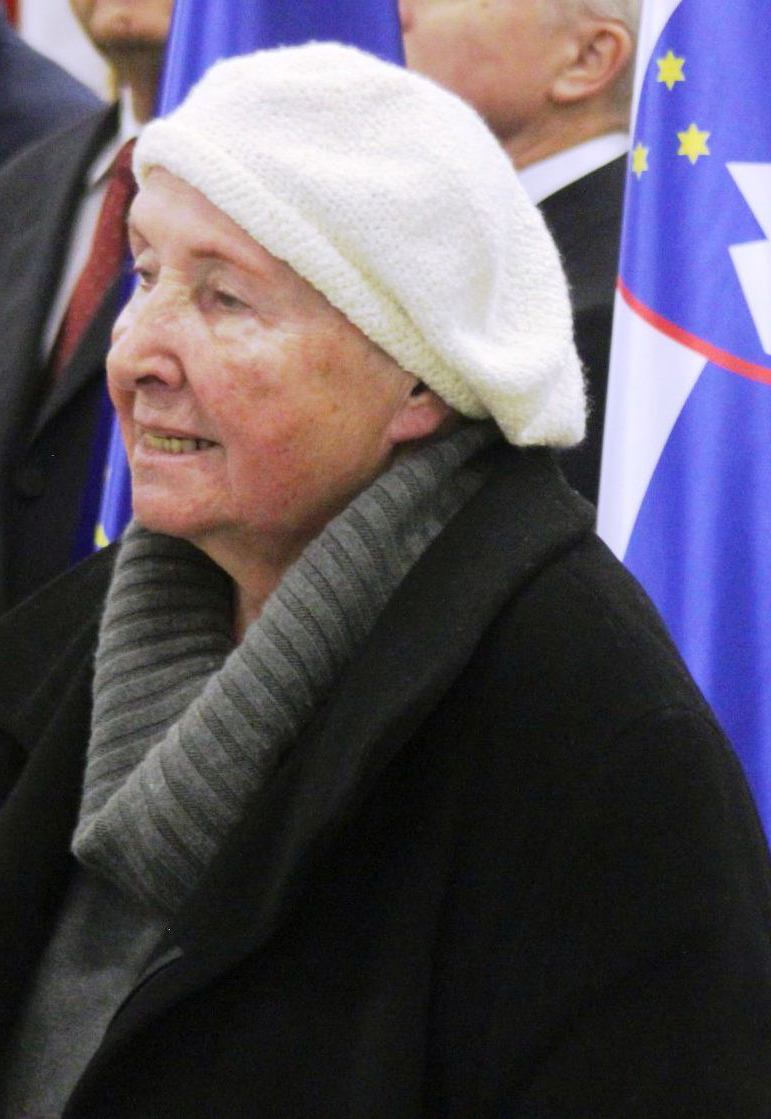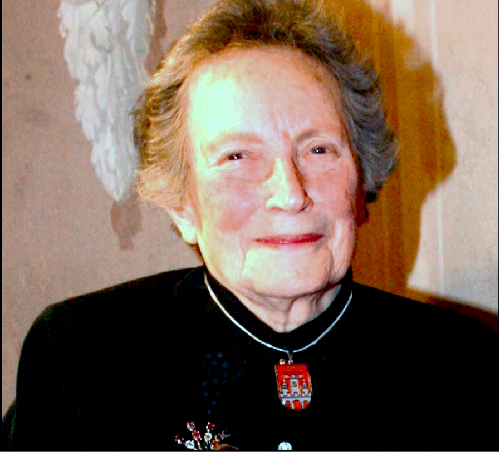Zora Janžekovič – Pediatric Burn Pioneer
A while ago now, I decided to write a series of articles based on a magazine list described as the “top 50 influential doctors in history.”
The list, a big undertaking if not a bit ostentatious; the series of articles, a satisfying and most rewarding ride through the history of my profession – a ride even any parent would find an unexpected and critical benefit.
Dr Zora JanZEkoviC, founder pediatric burn medicine, lifetime achievement award.
Zora Janžekovič, what she would herself describe as a simple doctor from Slovenia, was initially seen by western medicine as naively wrong – all the while she was completely revolutionizing burn care for children in her country… against incredible odds… in deplorable conditions.
Zora Janžekovič (1918-2015) – #47
Everything You Hope A Doctor Would Be
Humble to a “T,” Dr. Janžekovič cared for severely burned children in what, today, would be considered deplorable conditions. Children burned this badly almost uniformly died or became severely disfigured and crippled from their burns for most of the 20th century; until, in the tiny Slovenian city of Maribor, a plastic surgeon decided something needed to be done about it.
Revolutionized Burn Care
Dr. Janžekovič worked tirelessly noticing every subtle aspect of the children’s trauma and course, making small changes which seemed to work. Until one day, realizing that healing never came from the already burned tissue, she applied the simple logic that: “removing it would actually help the regenerating tissue heal easier and better.”
Cutting it away, of course, was what everyone was doing, everywhere; but, only as a last resort and then they debrided all the way down to the lowest fascia tissue – pretty much leaving nothing left that could “regenerate,” only cover in from the edges.
Under anesthesia, Dr. Janžekovič used a sharp razor to slice horizontally and almost scrape ultra-thin slices of dead tissue successively away only until she could see good blood vessels and tissue. That usually left a base layer of healthy skin and tissue which could regenerate. The technique is now known as tangential excision.
In addition, she found that if she immediately grafted a small slice of skin from elsewhere on the body over the new wound it made all the difference in the world! Using her method she could also use partial-thickness grafts instead of full-thickness meaning she could treat larger areas with less disfigurement.

With her new method she single-handedly shaped an entire field of practice with the introduction of what became the “gold standard” of care for deep dermal burns. She is still the only woman mentioned when talking about contributions in the field.
Early Years and Training
Zora was born on September 30, 1918 in Slovenska Bistrica, Yugoslavia (now Slovenia) the daughter of Matko and Helena (Vehovar) Janžekovič. Little is known in the western world about her early life but she graduated as doctor of medicine in 1947 from the Zagreb Medical School.
She interned at General Hospital Maribor, Slovenia between 1947 and 1948 then became a specialist in plastic surgery at the Ljubljana Medical School in Belgrade in 1957. Her life’s work was as a surgeon in the town of Maribor where she became head of the department.
Condescending Disbelief
She reported her new techniques to the medical community in 1968 but her results were considered just too good to be true. How could such a game-changing innovation be coming from a back-water village – and behind the “iron curtain” no less. “The poor doctor must just be naively reporting results on superficial burns and not the 10-40% body surface area that she claims,” the detractors thought.
Because of that, it wasn’t until in the 1070s (and her visits to hospitals in Great Britain and the U.S. to demonstrate her techniques) that the “developed world’s” children finally benefited from her work.
Those who biographed her life remember her hearty and affectionate laughter in the hospital which was the heart of her work through the history of both the first and second world wars; from communist rule in Yugoslavia through the dissolution of the Soviet Union in 1991 and her new Slovenia’s entry into the European Union.

She was not political, but had a keen interest in and was a precise observer of society. Her observations were not always received with acclaim but her steadfast commitment to the cause of suffering children and maintaining that “to be a doctor, one’s purpose is to be there for the care and recovery of one’s patients.”
Honors and Accomplishments
From 1964 to 1984 internationally renowned burn surgeons ventured into the walled Soviet Union to learn her methods until she was able to leave to exchange her techniques with the world. When they accepted and instituted her techniques a doctor named Burke saw his death rate go from 25% in 1974 to 7% between 1979 and 84.
The Berlin Wall fell in 1989 and Yugoslavia gained independence in 1991. The European Club for Paediatric Burns named an award for contributions in the Treatment of burns after her and gave her the first one in 2007. She received the Everth Idris Memorial lectureship from the American Burns Association, in Cincinnati in 1974; a lifetime achievement award and the Golden Coat of Arms from her Town of Maribor.
Fortunately for us all, she was asked to give a personal account of this revolutionary era of burn care which she was able to deliver in person to the 10th Workshop of the European Club for Paediatric Burns in 2007.
Zora’s lifework saved the lives and limbs of countless thousands of burn victims and is still doing so even today. The very successful woman and medical doctor passed away in her retirement village on the 17th of March 2015 “in the stillness of the night.”
During the celebration of her 90th birthday she spoke her parting words to her friends and colleagues: “At 90 years old I can say: My life was worth having been lived.”
We all should be so lucky!
Biographic Summary
Zora Janžekovič was the pioneer who revolutionized burn care in the 1960’s.
Born: September 30, 1918 in Slovenska Bistrica, Yugoslavia (now Slovenia)
Died: March 17, 2015
Education: Medical school, 1947 Zagreb Medical School; Plastic surgery residency, 1957, Ljubljana Medical School in Belgrade
Known for: Developing the techniques which are still the “gold standard” of care for burns
Parents: Matko and Helena (Vehovar) Janžekovič.
26 Posts in Top 50 Doctors (top50) Series
- 26 - Carlos Chagas, Chaga's Disease & pneumocystis pneumonia. – 10 Apr 2025
- 27 - Charles D. Kelman - Cataracts – 9 Mar 2023
- 28 - Cicely D. Williams, Kwashiorkor, Breastfeeding, Whistleblower – 21 Jun 2022
- 29 - Dame Cicely Saunders, Hospice – 23 Apr 2018
- 30 - David L. Sackett, Evidence-based Medicine – 2 Apr 2018
- 31 - E. Donnall Thomas & Joseph Murray, Bone Marrow Transplants – 23 Feb 2018
- 32 - Elizabeth Blackwell, women in medicine – 29 Jan 2018
- 33 - Elisabeth Kübler-Ross, stages of grief – 5 Jan 2018
- 34 - Watson & Crick, DNA – 2 Dec 2017
- 35 - Mahmut Gazi Yaşargil, Micro-Surgery – 24 Oct 2017
- 36 - George Papanicolaou, Cytopathology, Cancer – 29 Sep 2017
- 37 - Dr. James Parkinson, Parkinson's Disease – 1 Sep 2017
- 38 - Dr. John Snow, cholera – 20 Aug 2017
- 39 - Dr. Joseph Kirsner, GI Joe – 27 Jul 2017
- 40 - Lawrence (Larry) Einhorn, chemotherapy – 16 Jun 2017
- 41 - Robert Koch, modern bacteriology – 21 Mar 2017
- 42 - Stanley Dudrick, TPN – 28 Feb 2017
- 43 - Stanley Prusiner, neurodegenerative diseases – 25 Jan 2017
- 44 - Victor McKusick, medical genetics – 3 Jan 2017
- 45 - Virginia Apgar, anesthesiology & newborn care – 12 Nov 2016
- 46 - William Harvey, circulation – 12 Oct 2016
- 47 - Zora Janžekovič, burns – 26 Sep 2016
- 48 - Helen Taussig, blue babies – 3 Sep 2016
- 49 - Henry Gray, anatomy – 3 Jul 2016
- 50 - Nikolay Pirogov, field surgery – 11 Jun 2016
- Top 50 Doctors: Intro/Index – 10 Jun 2016
Advertisement by Google
(sorry, only few pages have ads)

